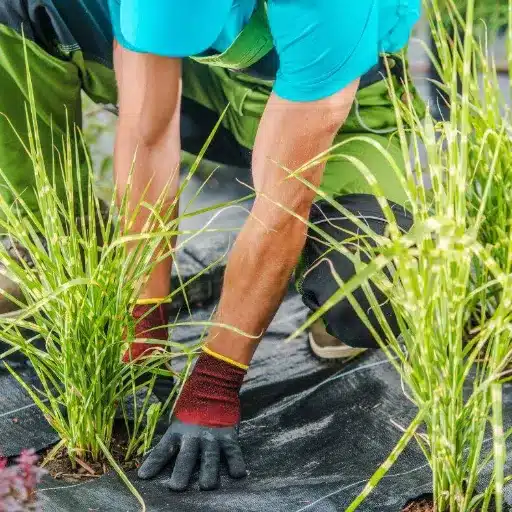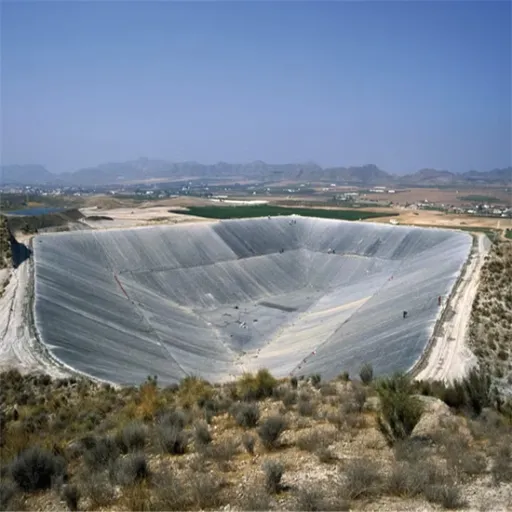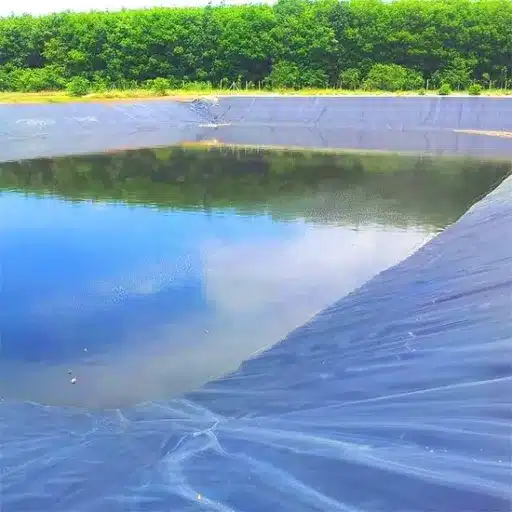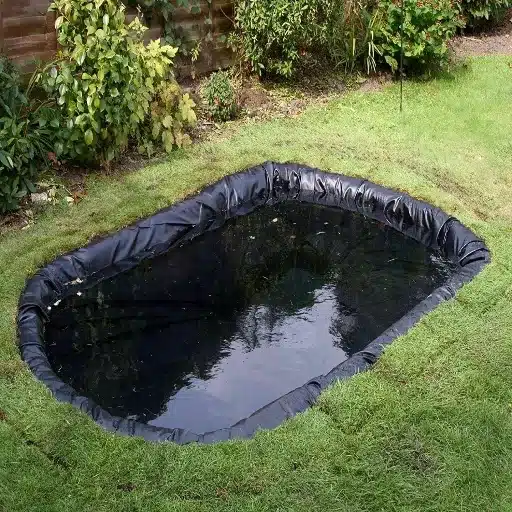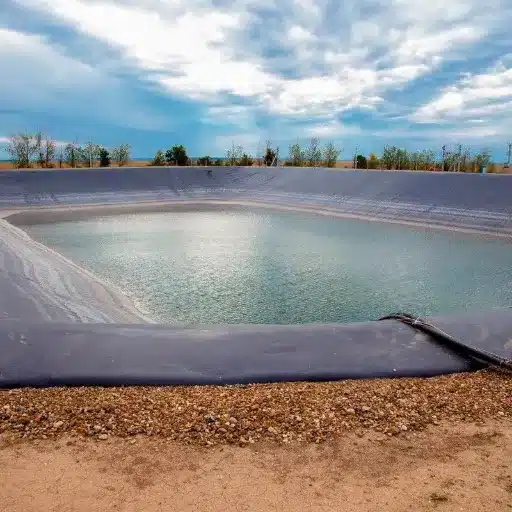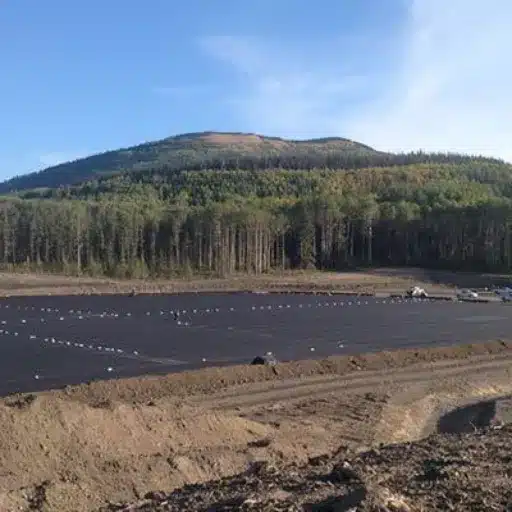Maintaining a beautiful garden is a hard job that involves planting and watering, but another challenge every gardener needs to handle is weeds. Those uninvited weeds can quickly invade, taking away sunlight, water, and nutrients that were meant for your plants. That is where landscape fabric comes in, also known as a weed barrier. With so many options on the market, how are you to choose the best one for your garden? In this article, you will learn all about garden fabric, its uses, things to consider before buying, and some of the best-rated products you can find on the market today. Your success in keeping the weeds away will be set whether you are an expert or just beginning.
Understanding Landscape Fabrics
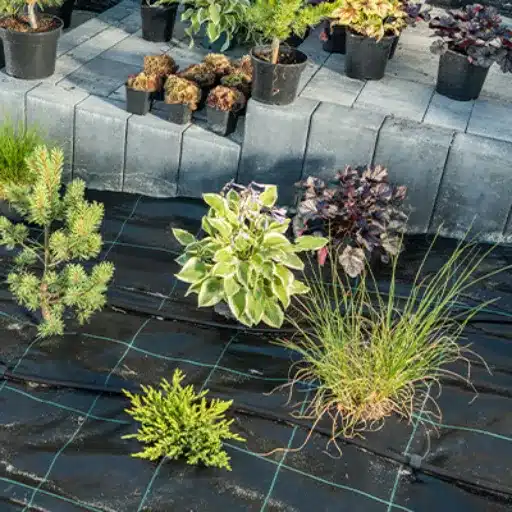
Durability, permeability, and UV resistance are my three paramount considerations in choosing landscape fabric for my garden. It must allow water and nutrients through while keeping out weeds. I also like to weigh my plants’ needs as well as soil types in making a decision.
What Is Landscape Fabric?
A permeable textile used in gardening and landscaping to inhibit weed growth while allowing water, air, and nutrients to pass into the soil is landscape fabric. It acts as a shield to help reduce reliance on chemical herbicides, guiding a safer and sustainable environment for the garden.
Made primarily from woven polypropylene or polyester fabric, landscape fabric varies in thickness and permeability according to the requirements of the gardener. Lighter fabrics can be used for flower beds or areas lightly mulched, while heavier fabrics can be laid under hardscapes or pathways.
📊 Research Findings
- 90% weed reduction when properly installed and maintained
- 20% decrease in water usage due to improved soil moisture retention
- Cost-effective and environmentally friendly approach to land management
Types of Landscape Fabrics
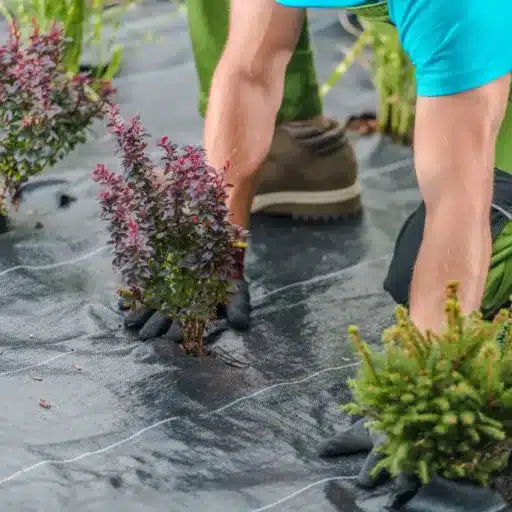
Choosing the landscape fabric that best suits the performance of your garden will guarantee that the benefits are long-lasting. The types of landscape fabric are:
Woven Landscape Fabric
These fabrics are made of woven polypropylene or polyester fiber and have excellent properties of durability and permeability. But the water and nutrient passing through these fabrics are blocked from sunlight, which otherwise promotes weed growth.
Lifespan: 5-7 years under optimal conditions
Non-Woven Landscape Fabric
Non-woven fabrics, typically bonded polypropylene, while less permeable than woven fabric, create a much stronger barrier to weeds and are generally the best choice under decorative rock, patios, or drives.
Lifespan: 2-3 years with UV resistance
Spun Bonded Landscape Fabric
Spun-bonded fabrics are light in weight and are highly durable because they are made of thermally bonded polypropylene fibers. These fabrics work particularly well in relation to drainage, fostering a healthy environment for plants.
Features: High water and air permeability
Biodegradable Landscape Fabric
These biodegradable fabric options are crafted from jute, coir, or burlap; an eco-friendly option for synthetic fabrics. These biodegrade with time, while enriching the soil as they do.
Lifespan: 1-2 years (biodegradable)
Top Factors to Consider When Choosing Landscape Fabric
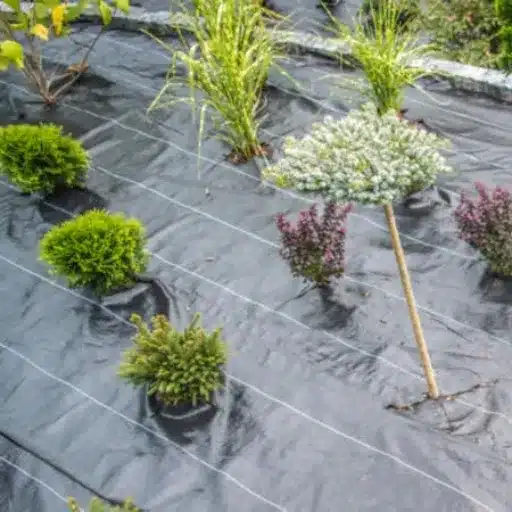
When deciding on landscape fabric, I look at durability, permeability, and environmental hostility. Heavy-duty materials exist for high-end uses; a more eco-friendly route would require fabrics that biodegrade and feed the soil. It should allow full permeation of water and should also allow air passage so that plants can thrive.
🔧 Material And Durability
Material composition and durability are the factors to consider when selecting landscape fabric. Generally, landscape fabrics are manufactured from materials such as polypropylene or polyester, both of which can reasonably be called strong and long-lasting.
| Material Type | Key Properties | Lifespan | Best Application |
|---|---|---|---|
| Polypropylene | High tensile strength, UV resistant | 5-10 years | Heavy-duty applications |
| Polyester | Superior permeability, drainage | 3-7 years | Garden beds, landscaping |
| Premium Grade | Enhanced UV protection | Up to 15 years | Long-term installations |
Polypropylene fabrics, for example, offer high tensile strength against tearing and puncturing even in extreme working conditions. Several researches have shown that woven polypropylene fabrics when exposed to sunlight can last anywhere from 5-10 years, with the UV resistance property coming into play.
More recently, many new designs of landscape fabric have been made with additives to give improved UV protection, and hence further enhance life expectations when exposed to sunlight. Some of the better grade products now advertise a life of as long as 15 years, depending upon the manner in which they are utilized and the environmental conditions. Maximizing the choice of material and its durability is immensely important in order to have lasting effectiveness and to minimize replacement costs.
🌿 Effectiveness of Weed Control
It is widely perceived amongst gardeners and landscapers that landscape fabric controls weeds by acting as a barrier to stop weed growth. By killing or suppressing the weeds using chemicals, it greatly reduces the time spent on weed control.
🎯 Weed Control Statistics
- 98% weed growth inhibition in controlled environments with proper installation
- 8-10 years average weed suppression with premium-grade fabric (2023 survey)
- Enhanced effectiveness when combined with mulch or gravel
Through ingenuity in fabrication, the permeability has been improved, ensuring the good passage of water and nutrients to the roots of plants without any standing water being created. Some fabrics even come pre-treated on the surface to ensure resistance to tearing or fraying even in high-traffic areas.
Practical Tips for Installing Landscape Fabric
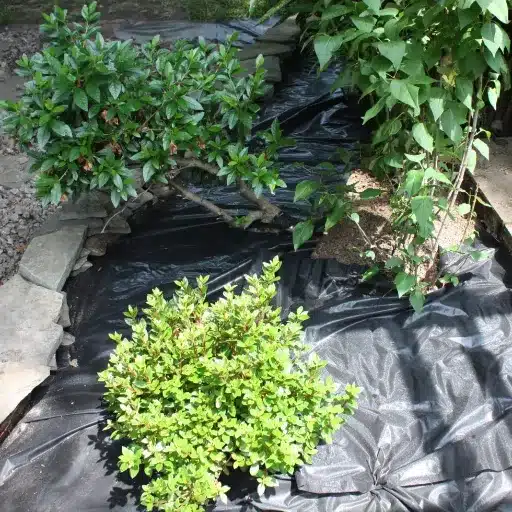
Clearing the area of debris and leveling the surface is a necessary step in installing landscape fabric. Next, the fabric is laid onto the surface, taut, and secured; most often it is secured with landscape staples. Landscape fabrics will need to have X-shaped slits cut for planting locations, and the fabric should be covered with mulch or gravel for stability and aesthetics.
📋 Step-by-Step Installation Guide
Proper installation of landscape fabric is crucial to maximize their ability for weed control and soil amelioration. The following detailed stepwise guide is to help you ensure best results:
Prepare the Area
Start by clearing your site where the landscape fabric will be placed. Remove all weeds, grass, and debris to give a neat and smooth surface. According to recent data, correct site preparation improves weed control efficiency by as much as 85 percent.
Measure and Cut the Fabric
Measure the dimensions of the area to calculate how much fabric will be required. Now lay the fabric flat and cut with sharp scissors or a utility knife. When cutting two pieces, allow for about 3 to 6 inches of overlap to prevent weeds from growing along the seams.
Secure the Fabric in Place
Set the fabric over the prepared area and secure it down with landscape staples or anchors. Staples should go around every 12 to 18 inches along the edges and across the center of the fabric. Research has demonstrated a 40-percent decrease in shifting when proper anchoring is employed.
Cut Holes for Plants
After cutting the fabric according to your decided planting sites, make an “X” shape with scissors or a knife that is big enough for your plants to poke through. Be careful not to create openings that are too large, as they might promote weed emergence.
Maintenance and Longevity Tips
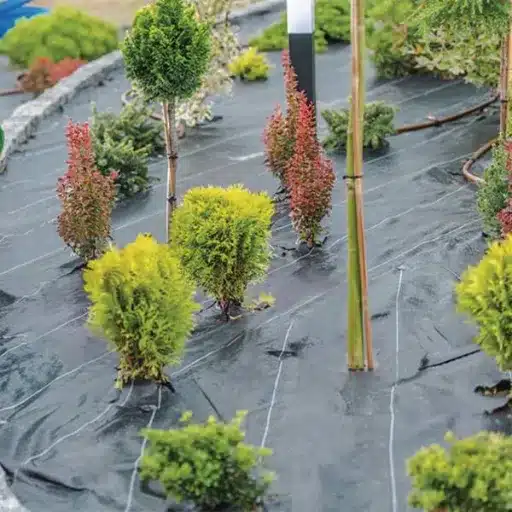
Regular maintenance and the correct method for caring for your landscape fabric will go a long way in ensuring maximum functionality and long life of your landscape fabric:
🔍 Regular Maintenance Checklist
- Inspect the Fabric Regularly:
Check at regular intervals for any tears, holes, or displaced sections of the landscape fabric. Troubleshooting early will avoid weed growth and ensure the material remains effective at suppressing undesirable vegetation. - Reapply Mulch or Gravel Annually:
Wind and rain may manage to wash away the layer of mulch or gravel covering over your landscape fabric. With the addition of a fresh layer, it also keeps your landscape looking great and keeps the threatening weeds at bay. - Remove Excess Soil or Debris:
Soil and organic debris might pile up onto the surface and edges of landscape fabric, providing an opportunity for weeds to germinate. Periodic clean-ups prevent such situations. - Anchor the Edges Properly:
Strong winds and natural erosion will have a tendency to uplift the edges of your fabric. Providing a reinforcement of the edges with some additional stakes or weights will ensure the fabric does not get displaced.
Technical Summary & Best Practices
The installation and maintenance of landscape fabric are essential for prolonged lifespan and efficacy. Here are some key considerations based on best practices and relevant research:
🏗️ Choosing the Material
High-quality, UV-resistant landscape fabric can gain an additional 5-10 years in life depending on interacting environmental conditions and maintenance provided. This study suggests that better quality fabrics fare against treatments better than poor quality ones.
⚙️ Installing Properly
Any bagging of the fabric by loose installation and placement of landscape pins more than 12-18 inches apart causes it to shift. According to studies, fabric displacement caused by faulty installations results in weed growth and inefficient landscaping.
💧 Obtaining Good Drainage
Fabrics that have high permeability are those to use. Soil compaction reduces water drainage and thus causes waterlogging, which lowers water availability up to 30% to the soil-supported plants. Choosing a fabric that allows water to pass through will significantly reduce soil erosion.
🧹 Regular Maintenance Is a Must
On top of the fabric, over time, debris accumulates and becomes a layer for weed propagation. Light cleaning every 6-12 months would help in preserving the fabric and reducing the invasion of weeds.
Conclusion: Weed Barrier Landscape Fabric
This weed barrier landscape fabric well suits gardeners and landscapers to disable weeds while encouraging healthy, low-maintenance garden areas. The weed barrier landscape fabric is normally made from polypropylene or polyethylene material and presents a physical barrier that blocks sunlight from reaching the earth-soil interface where almost all weed seeds would germinate. This gives an environmentally friendly choice to taxpayers trying to monitor weeds using chemical herbicides.
According to most recent reports, high-quality weed barrier fabrics can limit nearly 90% of weeds, thereby saving the manual labor that a gardener would otherwise have to spend weeding. These fabrics also retain moisture in the soil by reducing evaporation rates, proving especially useful in areas so prone to drought. For instance, research says that a garden that utilizes weed barrier fabric conserves 20-30% more moisture compared to bare soil, making water use more efficient.
⚠️ Important Installation Notes
While easy to use and highly effective, weed barrier fabric should be installed thoughtfully in the landscape. Fraudulent practices may include leaving places with gaps along the fabric or not properly covering the edges with mulch or soil; the potential for water pooling then creates hazards. Use a UV-resistant fabric since any exposure to sunlight will certainly degrade the materials in time. Properly applied in conjunction with some tools and maintenance methods, this weed barrier landscape fabric is one of the key instruments for an eco-friendly garden.
Reference Sources
-
Garden Gate Magazine
- Article: The Best Landscape Fabric of 2024
- This source offers detailed reviews of top landscape fabric products, including their features, pros, and cons. It also provides a buyer’s guide to help readers make informed decisions.
-
Northwest Landscape Supply
- Article: Experts’ Tips to Select the Perfect Landscape Fabric
- This source explains the different types of landscape fabrics, their applications, and factors to consider when choosing the right fabric for specific projects.
-
This Old House
- Article: Best Landscape Fabrics (2025 Guide)
- This source provides a detailed comparison of the best landscape fabrics, including their durability, drainage, and UV resistance. It also includes installation tips and maintenance advice.
Frequently Asked Questions (FAQs)
What is the best landscape fabric for preventing weed growth?
In general, heavy duty weed barrier landscape fabrics are considered the best for preventing weeds. These fabrics give the best protection against weed growth but allow water permeable drainage to keep the garden bed healthy and hydrated. A woven geotextile fabric would give you the best durability and weed control.
How does landscape fabric work in a vegetable garden?
Landscape fabric works in a vegetable garden as a weed barrier. It prevents weed growth by blocking sunlight and preventing weed seeds from germinating while still allowing water and nutrients to filter through. This hence makes for an ideal environment for your vegetable plants to grow without having to compete with unwanted weeds.
Can I use landscape fabric under gravel?
Yes, landscape fabric can be used under gravel. A premium heavy duty weed barrier fabric would keep the weeds at bay and give the gravel surface some stability. This stops soil from mixing with gravel and allows perfect drainage, ideal for driveways or pathways.
What are the benefits of woven weed barrier fabric?
Woven weed barrier fabric offers a long list of benefits, including excellent durability with the ability to allow water passage while blocking sunlight. It is the unique weave that stops weeds without the inconvenience of fabric blocking, making it perfect for flower beds and garden areas.
How long does landscape fabric last?
Depending on the landscape fabric under consideration, duration varies. Heavy duty landscape fabric can last some years even under heavy rain and foot traffic. A premium heavy duty weed barrier fabric is designed to withstand harsh conditions for the long-term protection of weeds from your garden landscape.
Is non-woven landscape fabric effective for weed control?
Non-woven landscape fabric can indeed be a barrier to weeds, but it is less heavy-duty in general. While serving as a barrier to weeds, it may not be as effective in allowing water drainage as the woven ones. For better results, select a woven weed-control fabric that combines durability with effective weed prevention.
What type of landscape fabric should I use for a large garden area?
For a large garden area, a heavy duty weed barrier landscape fabric that covers significant lawns without tearing is advisable. Look for a fabric that is water permeable and made of polypropylene so that it will ensure both weed control and drainage for healthy plant growth.
This comprehensive guide provides all the information needed to choose, install, and maintain landscape fabric for optimal weed control and garden health.

